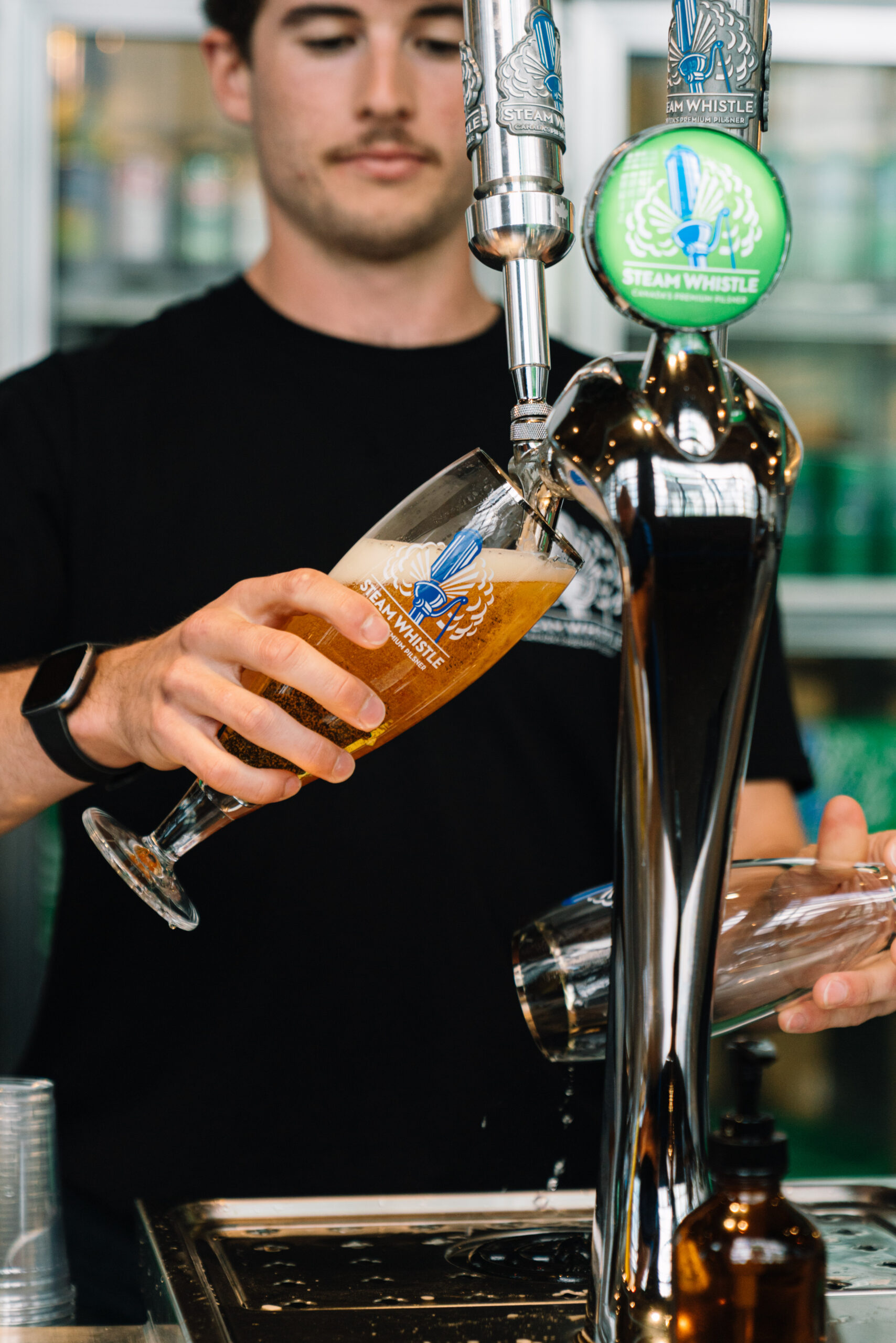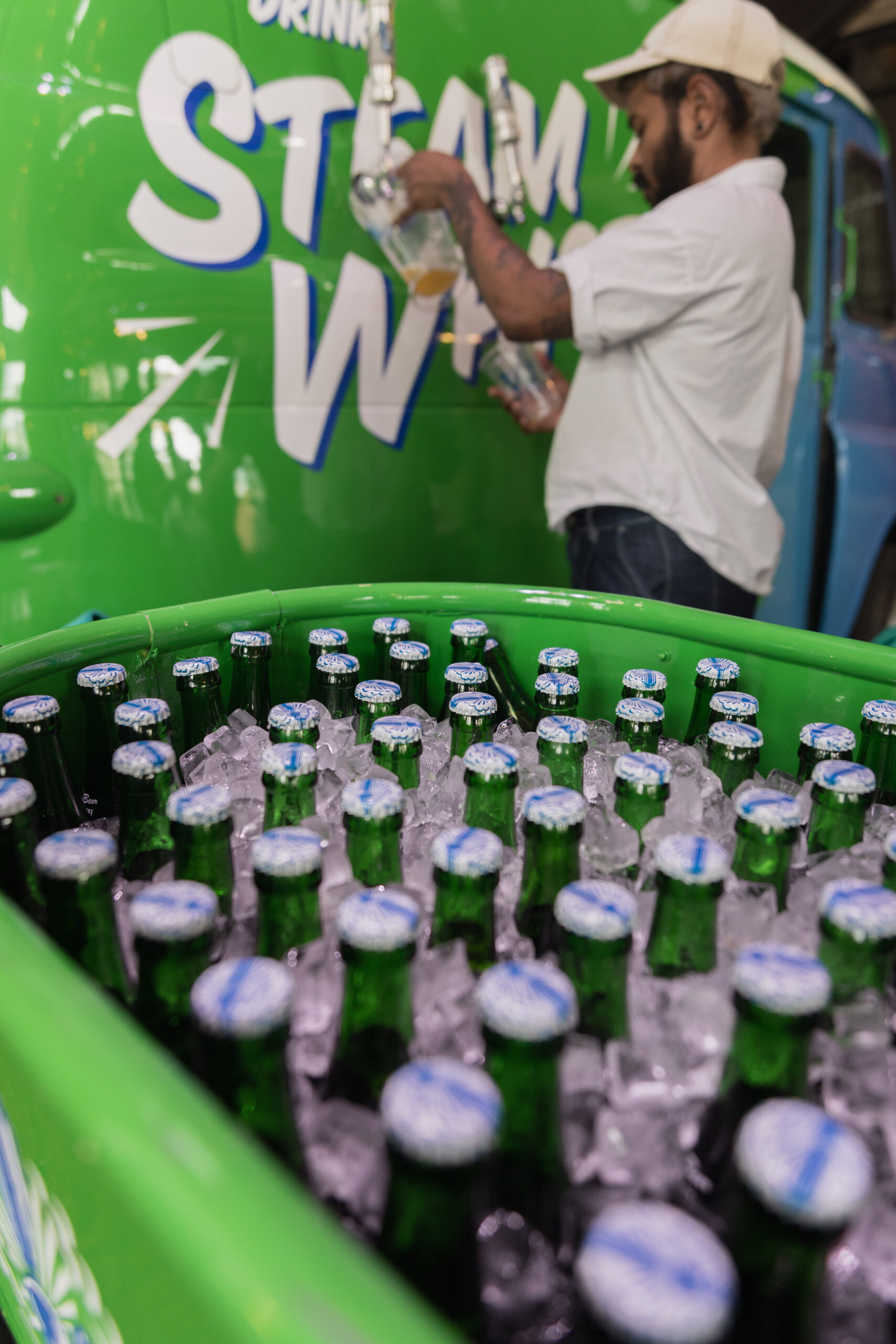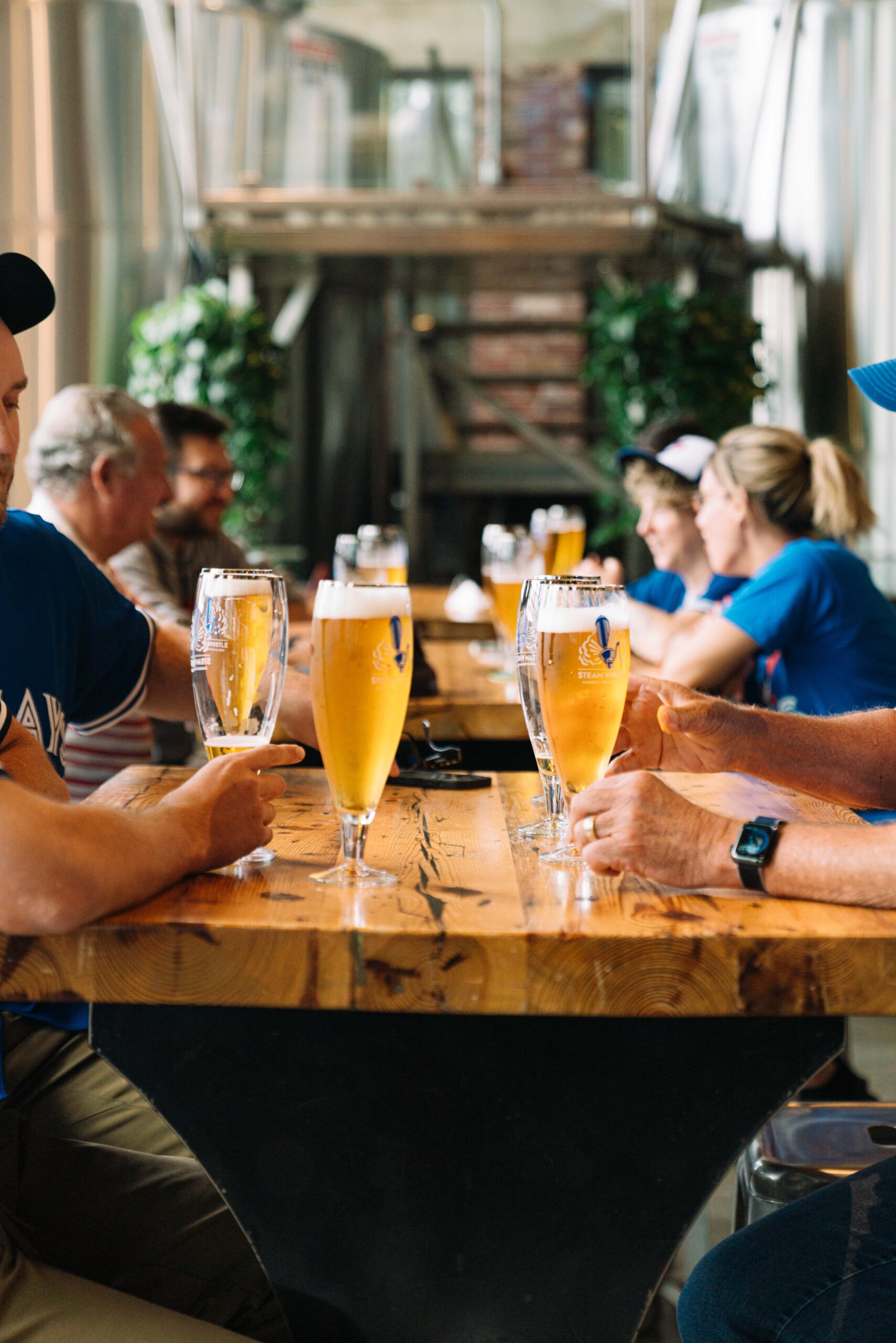
Greg Taylor’s passion for craft brewing and relentless pursuit of quality has propelled Steam Whistle Beer to become the iconic brand it is today. Learn more about the establishment of Toronto’s Roundhouse: Steam Whistle Brewing’s Cathedral of Beer.
What inspired you to enter the craft beer industry and start the Steam Whistle brand?
In 1989, I took a job as a driver delivering beer at the Upper Canada Brewing Company in Toronto’s west end. Over 9 years, I worked my way up in the company, however, in 1998, Sleeman Breweries acquired Upper Canada, and closed down the Toronto facility. I worked in other jobs & industries for a couple of years but kept in touch with my good friends from Upper Canada. On one of our many alumni canoe trips, three of us were sitting around the campfire reminiscing about our years working together. We all missed the beer industry and decided that night to get back to the work we loved and so we founded Steam Whistle Brewing soon after.
What were some of the challenges you faced in establishing Steam Whistle as a recognizable and respected brand in the craft beer market?
In 1999 when writing Steam Whistle’s business plan, there was little choice of beer (in Canada). My partners and I chose to compete against popular import brands, to do so, we needed to adopt a premium positioning and choose a European beer style, yet we’d make our beer fresh locally. For our flagship Steam Whistle Pilsner, we utilized only the best ingredients, traditional methods, and elegant packaging.
However, coming up with budgets to compete against these global conglomerates was a challenge. But that’s what entrepreneurs do is accept challenges – we were very resourceful and creative to stretch our meager budgets. We developed what we called the GOOD BEER FOLKS culture, hiring people that held our same values of community, integrity, and passion. We strove to be unique and memorable with our popular and fun brewery tours, our branded vintage vehicles (many of which had draught pouring equipment built right in) and through sponsoring charitable, cultural and community groups. We met people where they were celebrating occasions or causes important to them and joined in.



How did you come up with the idea of utilizing a historic railway roundhouse, and what significance does it hold for the brand?
We learned from our days at the Upper Canada Brewing Company that we needed to meet or exceed customers’ expectations about what a craft brewery meant, so we set out to find our “Cathedral of Beer”. A place where community gathers to celebrate all things craft and where our team works together to create Canada’s Premium Beer. As chance would have it, the Canadian Pacific Railway Roundhouse visible from the Gardiner was being restored with proper wooden windows. It was the first stop we made that day where a sign was posted by the City of Toronto inviting proposals for use. We immediately picked up the phone and joined the request for proposal process underway. We beat out all other submissions and began construction in the fall of 1999.
We already had our brewery’s name, Steam Whistle, which was a wonderful coincidence given that the John St. Roundhouse was a Canadian Pacifica Railway repair facility for steam locomotives that crossed the country. Built in 1929, it was renowned for the “John St. Polish”, a reflection of the pride of the gleaming steam engines that departed post-service. The setting was perfect and meant to be!
Could you share the concept behind the Biergärten and its evolution over the years?
Steam Whistle opened the Biergärten Restaurant in 2019, inspired by German Bierhalles we had seen on our Pilgrimage to Germany and the Czech Republic. Steam Whistle rewards long-service of our employees by taking them to the birthplace of Pilsner. Chef Calvin Lee opened the Biergärten with a menu full of house-made sausages, popular Bavarian soft pretzels, schnitzel, and pork hock. Over the years since, Calvin has evolved our menu to reflect a more Canadian experience. Some of the original European favourites are still available, but you’ll also find a uniquely Toronto experience with multicultural dishes and vegetarian options for the visitors of today.
Any final thoughts?
In 1999, as we were building Steam Whistle Brewing, we had concerns about whether there would be enough visitors. We hosted a free pancake breakfast for all the taxi companies to advertise that we were open and help them find our new location. Even though the Roundhouse is in the centre of Canada at the foot of the CN Tower, we were in an area not well known by the Toronto residents and city visitors as we were in the historic railway lands which had been off limits to the public.
At that time, Bremner Boulevard was only recently built and Lower Simcoe Street was not yet open between Front and Lake Shore Blvd. The City had showed us a model of Roundhouse Park that included hundreds of people and we weren’t sure that it would ever look like that. But how things have changed as Toronto and our District evolved from a tourism perspective! All the work by all members of the BIA has made this such an important part of any experience visiting Toronto. We are so proud to reside where we do and be part of something so great as this organization and our City.

Check out Steam Whistle online, or take a tour in person!
